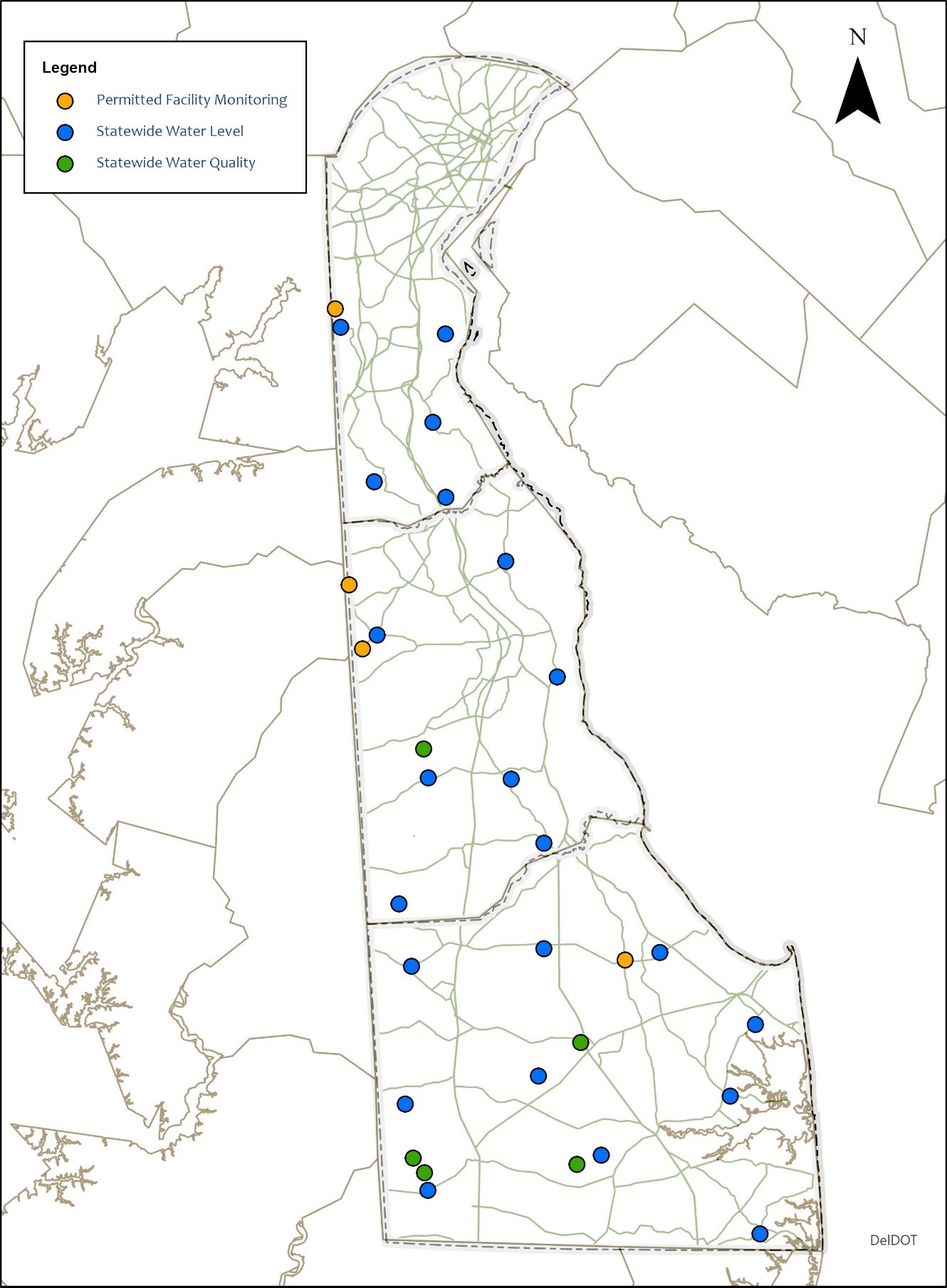The Division of Water monitors ambient water quality and multiple sites around the state to help support multiple goals of the Department. It also tracks the causes and effects of saltwater intrusion.
The Division of Water is expanding the number of existing groundwater monitoring wells throughout the State with real-time data collection equipment and installing new monitor wells in targeted locations for groundwater quality sampling.

The data and information collected as the result of this monitoring effort are used to address several objectives.
Monitoring long-term water-level trends in a statewide monitoring well network constructed in the unconfined aquifer.
Establishing baseline water quality in watersheds throughout the state.
Monitoring the groundwater quality of permitted facilities (e.g., wastewater treatment facilities, dredge disposal facilities).
Monitoring water-level trends at allocated facilities.
Making recommendations to Department management for future policy considerations.
The project includes the following series of monitoring wells across the state:
The State’s potable drinking water is at risk from saltwater intrusion as sea levels rise, climate changes and the demand of groundwater for potable use increases. The Division of Water has established multiple monitoring wells for the purpose of detecting saltwater intrusion.
Saltwater intrusion is the landward movement of salt water. The addition of water-supply wells near the coast can increase the potential for saltwater intrusion due to subsurface movement of the freshwater-saltwater interface. This intrusion can result from tidal influences, extreme changes in hydraulic head within the aquifers (i.e., drought conditions), or over-pumping.
Improper well construction along the coast can also lead to saltwater problems in water-supply wells.
The State’s potable drinking water is at risk for saltwater intrusion where high-capacity pumping of the groundwater occurs by industry and municipalities along the Delaware River in New Castle County. The Potomac Aquifer Saltwater Monitoring Program includes water-quality sampling from public, industrial, and monitoring wells near the Delaware River. Sampling is done twice a year to monitor chloride levels in the aquifer.
The Town of Bowers Beach is a coastal community located on the Delaware Bay in Kent County. During the early 2000s, the DNREC Water Supply Section responded to requests from homeowners who reported the taste of salt in their drinking water. This problem is not unusual due to the location of water-supply wells near the Delaware Bay. The Town is underlain by four primary water-producing aquifers (the Columbia, Frederica, Federalsburg and Cheswold aquifers). The Federalsburg aquifer was the primary drinking-water source at the time.
The Division of Water Resource Protection Section built five monitor wells in North Bowers during in 2019 and 2020. The wells were placed in the unconfined Columbia, confined Frederica, confined Federalsburg, confined Cheswold and confined Piney Point aquifers. The Piney Point aquifer is water bearing, but not currently used within the Town. The wells range in depth from 30 to 660 feet below ground surface.
The North Bowers Beach Saltwater Monitoring Program includes water-quality sampling from the monitoring well. Sampling is done quarterly.
The population in communities along Delaware’s coast has grown and much of the population has moved from seasonal (typically summer residency) to year-round residency. This growth in population has increased the number of high-capacity wells and the demand for groundwater to supply the population.
Coastal municipalities and private water suppliers from Lewes to Fenwick Island voluntarily agreed to collect untreated, raw water samples from production wells in 2008. Since 2008, as allocation permits have renewed or been amended, the voluntary agreement has changed. Water Allocation permits now include requirements for monitoring wells.
Wells in Delaware’s coastal communities draw groundwater from the unconfined water-table aquifer (Columbia), the unconfined Columbia-Pocomoke aquifer, the confined Pocomoke aquifer and the confined Manokin aquifer.
The Coastal Saltwater Monitoring Program collects samples from provers throughout the year, based on the pumping schedule of the municipality or public water utility.
Related Topics: resource protection, water, water monitoring, water quality